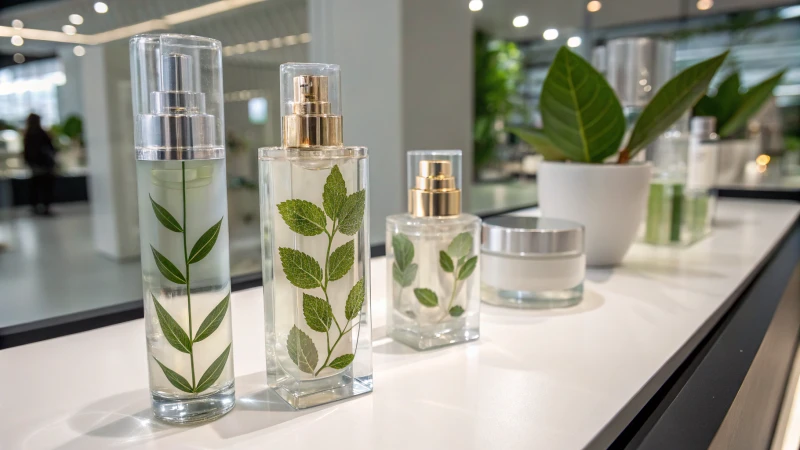
Imagine transforming your skincare routine with sleek, smart glass bottles that not only look good but also protect your favorite products.
The latest innovations in glass container production for cosmetics include nanotech coatings for durability, chemical recycling for true sustainability, and temperature control to preserve product quality. These advancements not only enhance packaging but also align with eco-friendly trends, offering brands a competitive edge in the modern market.
Having spent years in the cosmetics packaging industry, I’ve witnessed firsthand how these technologies are reshaping our approach to glass containers. I remember when nanotechnology was just a buzzword; now, it’s revolutionizing the way we keep those elegant glass bottles free from scratches and smudges.
The shift from merely recyclable to truly renewable glass is another game-changer. It’s like giving each bottle a second life, aligning perfectly with our growing environmental consciousness. And let’s not forget about temperature-controlled bottles. Imagine never having to worry about your favorite serum’s efficacy because it can maintain its ideal temperature no matter where you are.
These advancements aren’t just about keeping up with trends—they’re about enhancing the consumer experience while meeting global sustainability goals. For me, it’s about crafting a future where beauty and responsibility go hand in hand, something I’m deeply passionate about.
Nanotechnology coatings enhance scratch resistance in glass containers.صحيح
Nanotechnology coatings provide a protective layer, reducing scratches.
Chemical recycling of glass is not possible for cosmetics containers.خطأ
Chemical recycling allows glass to be broken down and reused efficiently.
How Does Nanotechnology Enhance Glass Container Durability?
Imagine the perfect world where your beloved skincare bottle never scratches, thanks to the magic of nanotechnology. Curious how this works?
Nanotechnology enhances glass container durability by applying ultra-thin coatings that create a protective layer. This layer prevents scratches, repels water and oils, and offers self-cleaning properties, significantly prolonging the glass’s lifespan.
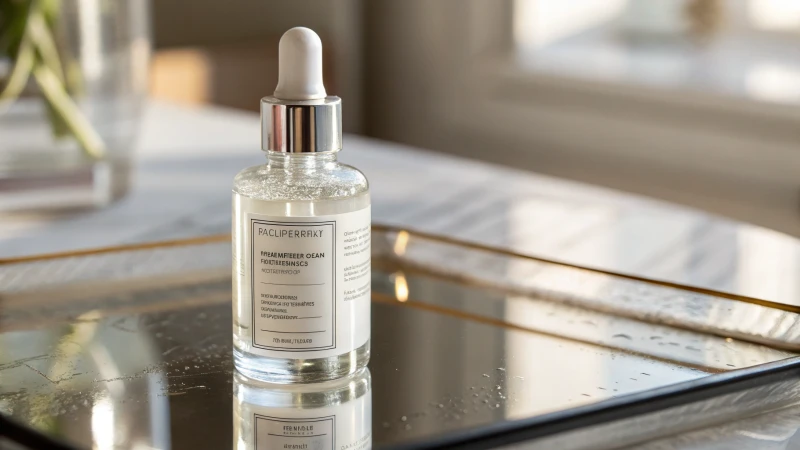
The Role of Nanocoatings in Glass Durability
I remember the frustration of finding scratches on my favorite perfume bottle. It was a luxury item, and I wanted it to stay pristine forever. That’s when I stumbled upon the incredible world of nanotechnology1. This cutting-edge innovation has completely changed the game for glass durability.
How Nanocoatings Work:
-
Scratch Resistance: Think of nanocoatings like a superhero cape for your glass. These tiny, transparent layers made of nanoparticles act as a shield, keeping scratches and abrasions at bay.
-
Self-Cleaning Properties: I love how these coatings repel water and oils. It’s like having an invisible cleaning crew keeping my glass containers spotless with minimal effort.
-
Enhanced Longevity: With less wear and tear, glass containers last much longer. For someone like me who appreciates cost-effectiveness, this is a huge win.
| Feature | Description |
|---|---|
| Scratch Resistance | Prevents surface abrasions and maintains clarity |
| Hydrophobicity | Repels water and oils, ensuring easy cleaning |
| Long-lasting | Extends lifespan and reduces replacement costs |
Applications in Various Industries
Nanotechnology isn’t just transforming cosmetics; it’s making waves across multiple industries. From food storage to scientific equipment, its versatility is impressive. I’ve seen self-cleaning glass2 become a staple in architecture, where aesthetics are paramount.
In cosmetics, high-end brands use these advancements to maintain their luxurious image. A flawless appearance not only boosts brand perception but also earns customer loyalty. With sustainability on everyone’s mind, using nanotechnology is a strategic advantage.
Challenges and Future Prospects
While the benefits are clear, there are hurdles to overcome:
-
Cost Implications: The initial investment in nanocoatings might be steep, but as technology evolves, prices are likely to drop.
-
Environmental Impact: Manufacturing nanoparticles requires careful regulation to minimize environmental harm. Embracing sustainable practices3 could help balance these concerns while keeping the advantages intact.
Nanocoatings make glass containers self-cleaning.صحيح
Nanoparticle coatings repel water and oils, maintaining clean surfaces.
Nanotechnology reduces the cost of glass containers.خطأ
Implementing nanocoatings can be expensive, increasing initial costs.
How Does Recycling Impact Sustainable Glass Packaging?
Recycling glass isn’t just an eco-friendly buzzword; it’s a lifeline for sustainable packaging.
Recycling in glass packaging means transforming used glass into cullet, which is then incorporated into new products. This reduces raw material needs, saves energy, and cuts CO2 emissions, driving environmental sustainability.
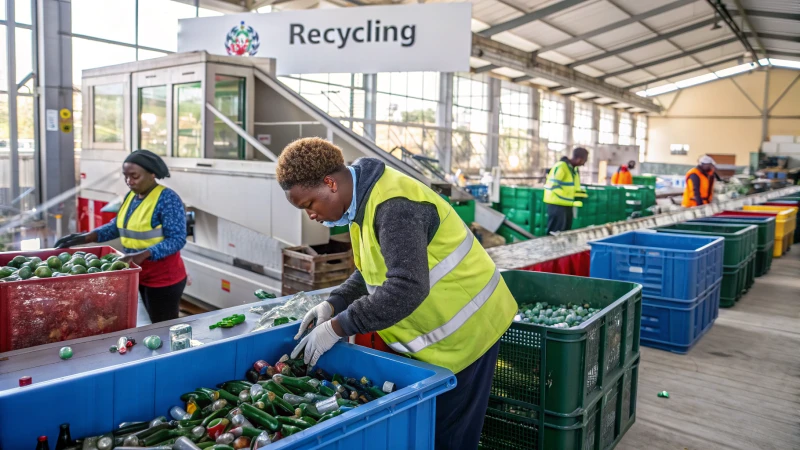
My Journey with Glass Recycling
I remember the first time I truly understood the impact of recycling on our environment. It was during a visit to a local recycling plant where I saw mountains of glass bottles waiting to be given a new life. This experience ignited my passion for sustainable packaging, especially for glass containers.
The Lifecycle of Glass Recycling
Recycling glass is akin to a magic trick I never tire of watching. It starts with collecting used containers, sorting them meticulously, and then cleaning them to perfection. Only after this do they become cullet4—crushed glass ready to be melted and reincarnated as new containers. The best part? This cycle is endless. Unlike other materials, glass doesn’t lose its quality, making it a linchpin in the circular economy5.
Environmental Benefits of Recycling Glass
The beauty of recycled glass lies in its efficiency. I once met an industry expert who explained how using 100% cullet in glass production can slash energy use by 40%. That’s because melting cullet demands less heat than starting from scratch with raw materials.
Moreover, each ton of recycled glass saves over a ton of natural resources—sand and soda ash, to name a couple. It’s like giving Mother Earth a much-needed break from the relentless extraction of her resources.
| Metric | Benefit |
|---|---|
| Energy Savings | 40% reduction in energy use |
| CO2 Emissions Reduction | 300kg less CO2 per ton of cullet |
| Raw Material Conservation | 1 ton saved per ton of recycled glass |
Economic Advantages
The financial perks of recycling are like the cherry on top. Reducing raw material use and energy consumption leads to lower production costs—a secret weapon for companies keen on sustainability6.
Beyond the cost savings, recycling breathes life into local economies by creating jobs in collection and processing facilities. It’s rewarding to see communities thrive while contributing to global environmental goals.
Challenges in Recycling Glass Packaging
However, the path isn’t always smooth. Contamination and color sorting can trip up the recycling process. I’ve seen firsthand how technological advancements—like optical sorting—are tackling these issues head-on.
Adopting such innovations can elevate recycling rates and quality, ensuring more glass is kept from landfills and re-enters the production cycle. It’s an exciting time to be part of this change, as every small step forward feels like a giant leap for sustainability.
Glass can be recycled indefinitely without quality loss.صحيح
Glass recycling maintains quality, supporting a circular economy.
Recycling glass reduces energy use by 10%.خطأ
Recycling glass reduces energy use by approximately 40%.
Why is Temperature Control Crucial in Glass Bottles for Cosmetics?
Ever wondered why your skincare products sometimes seem less effective? It might just be the temperature control in their glass bottles.
Temperature control in glass bottles for cosmetics is essential to preserve the quality and effectiveness of products, especially those with temperature-sensitive active ingredients, by preventing degradation due to temperature variations.
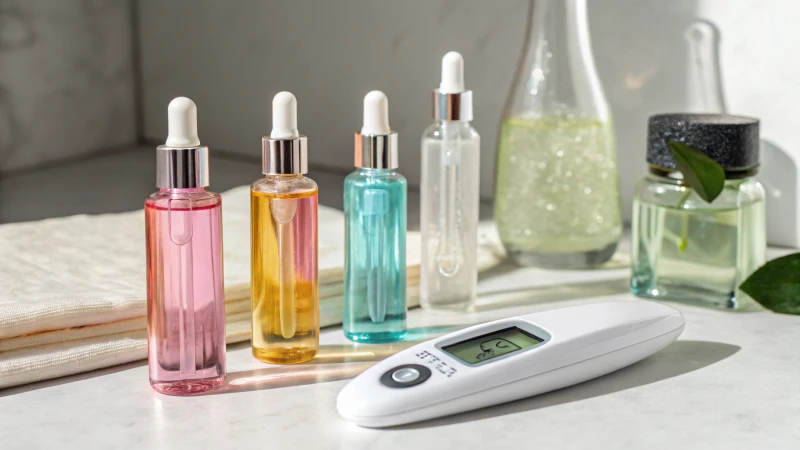
The Science Behind Temperature Control
I remember the first time I invested in a high-end serum only to find out it wasn’t working as expected. After some digging, I realized that improper storage was the culprit. Active ingredients like retinol, vitamin C, and peptides are sensitive to heat7. These powerhouses can lose potency, oxidize, or break down if exposed to fluctuating temperatures.
| المكونات | Impact of Heat |
|---|---|
| Retinol | Loses potency |
| Vitamin C | Oxidizes quickly |
| Peptides | Breaks down |
Technology in Temperature-Controlled Packaging
This is where modern glass packaging shines. Imagine walking into a room where the temperature is just right, no matter what the weather is outside—that’s what these glass bottles do for your cosmetics. They use advanced materials and thermal principles to maintain a stable environment inside the bottle, safeguarding your products from external temperature changes8.
The Role of Material Selection
I learned that borosilicate glass is a game-changer. It’s like the superhero of glass materials, offering incredible thermal resistance that keeps our beauty potions stable and effective. This choice not only prolongs the life of delicate formulas but also ensures they perform just as intended.
Materials like borosilicate glass are preferred for their thermal resistance properties. They offer better insulation against temperature fluctuations compared to regular glass. This material choice supports the longevity of sensitive formulas9 and helps sustain the product’s intended effects.
Consumer Expectations and Brand Integrity
As someone who values quality, I know how crucial it is for brands to meet consumer expectations. Temperature-controlled packaging not only assures efficacy but also boosts brand reputation. I’ve seen firsthand how companies that invest in this technology earn customer loyalty, as they’re perceived as caring about product integrity and consumer satisfaction.
| Consumer Expectation | Brand Response |
|---|---|
| Product efficacy | Temperature-controlled packaging |
| Stability assurance | High-quality glass materials |
Retinol degrades if exposed to high temperatures.صحيح
Retinol loses potency when subjected to heat, affecting efficacy.
Borosilicate glass offers poor insulation against heat.خطأ
Borosilicate glass is known for its excellent thermal resistance.
Could Glass Alternatives Be the Future of Cosmetic Packaging?
Imagine a world where your favorite skincare products come in packaging that’s not only sleek but also eco-friendly. Sounds like a dream, right?
Glass alternatives, such as biodegradable plastics and composite materials, are revolutionizing cosmetic packaging by offering sustainable and durable options that promise to reshape the industry’s future.
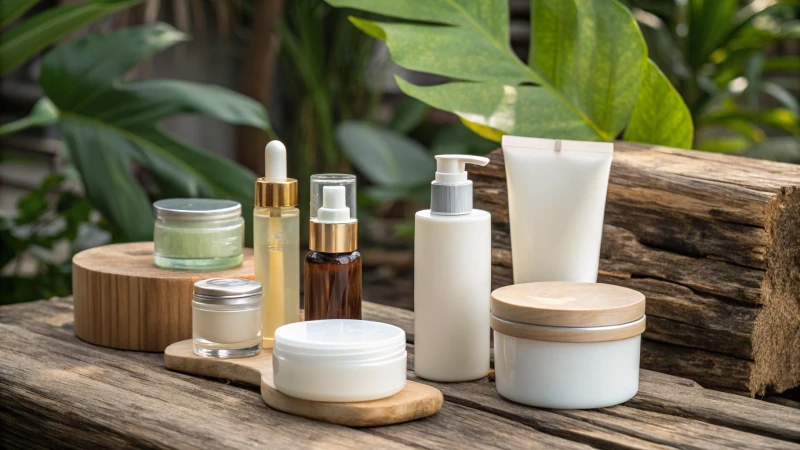
The Rise of Eco-Friendly Packaging Materials
I remember the first time I held a beautifully crafted glass perfume bottle—it felt luxurious, yet I couldn’t shake off the worry about its fragility. Traditional glass is undeniably elegant but has its drawbacks, like being heavy and prone to breaking. That’s why the buzz around materials like biodegradable plastics, such as polylactic acid (PLA)10, caught my attention. These alternatives provide the aesthetic appeal we love in glass but are lightweight and far more resilient.
| Material Type | Key Benefits | Challenges |
|---|---|---|
| PLA | Biodegradable, lightweight | Limited heat resistance |
| Composite Glass | Strong, transparent | Costly production |
| Transparent Ceramics | Durable, eco-friendly | Complex manufacturing process |
Cost and Environmental Benefits
Switching to these glass alternatives doesn’t just make sense for the environment; it also makes economic sense. Imagine saving on shipping costs because the packaging is lighter and more durable, leading to fewer breakage incidents. Many brands are exploring composite materials11 that blend glass with ceramics or metals, combining strength with reduced environmental impact. This is not just a trend; it’s a necessity driven by global sustainability demands.
Technological Innovations in Packaging
The leaps in packaging tech are fascinating! I recently read about nanotechnology coatings that can mimic the reflective qualities of glass. Who would’ve thought that biodegradable packaging12 could now offer features like UV protection and antioxidation? These innovations are paving the way for smarter and more sustainable packaging solutions.
Consumer Demand for Sustainable Solutions
It’s heartening to see that the push for sustainability isn’t just coming from the industry—it’s us consumers demanding change. We want our favorite brands to meet our eco-friendly expectations, and integrating renewable materials13 into packaging does just that. As awareness grows, I believe adopting these glass alternatives will soon be not just a choice but a requirement for brands wanting to stay relevant.
The journey towards innovative cosmetic packaging is exciting, balancing the luxury we crave with the sustainability our planet needs. As more brands explore these alternatives, we’re on the brink of a new era in beauty packaging—one that aligns with both our values and desires.
PLA is a biodegradable alternative to glass.صحيح
PLA is made from renewable resources and decomposes naturally.
Composite glass is cheaper to produce than traditional glass.خطأ
Composite glass production involves costly processes due to material complexity.
الخاتمة
Innovations in glass cosmetic containers include nanotech coatings for durability, chemical recycling for sustainability, and temperature control to enhance product efficacy, aligning with eco-friendly consumer demands.
-
Discover how nanocoatings provide an invisible shield against scratches, enhancing durability. ↩
-
Learn about self-cleaning glass and its applications in various industries. ↩
-
Explore sustainable methods in nanoparticle production to minimize environmental impact. ↩
-
Cullet is crucial for sustainable glass production, reducing resource usage and energy costs. ↩
-
Understanding the circular economy highlights its role in resource efficiency and waste reduction. ↩
-
Learn how sustainability strategies can enhance a company’s market position and profitability. ↩
-
Learn why certain cosmetic ingredients are prone to degradation from heat, affecting product performance. ↩
-
Discover how innovative packaging maintains stable temperatures to protect sensitive cosmetics. ↩
-
Explore the advantages of using borosilicate glass in cosmetic packaging for temperature-sensitive products. ↩
-
Learn about PLA’s role in sustainable packaging and its benefits over traditional materials. ↩
-
Discover how composite materials enhance packaging strength and sustainability. ↩
-
Explore different biodegradable packaging materials and their environmental impact. ↩
-
Understand how renewable materials are revolutionizing eco-friendly packaging. ↩



